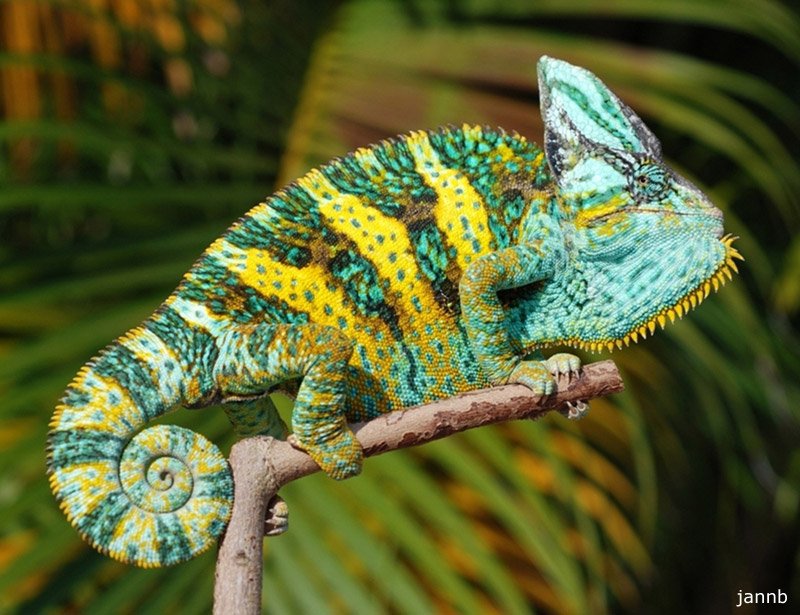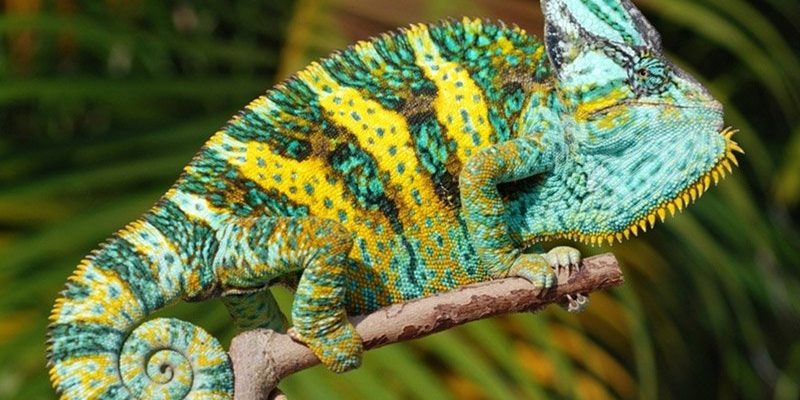
In this article, we’ll dive into the world of veiled chameleons, exploring their behavior, habits, and the potential risks they pose. It’s a bit like sitting down for coffee with a friend and chatting about the quirks of owning a not-so-ordinary pet. So, let’s get to the heart of the matter!
What Is a Veiled Chameleon?
Veiled chameleons, scientifically known as *Chamaeleo calyptratus*, are native to Yemen and Saudi Arabia. They are easily recognizable by their striking appearance—think vivid greens, blues, and yellows, often adorned with unique patterns. This species can grow up to 24 inches long, making them one of the larger chameleon species.
What’s even more intriguing is their incredible ability to change color. This isn’t just for show; chameleons shift their hues primarily for camouflage, temperature regulation, and communication. Imagine if you could change your outfit based on your mood! But while their color-changing ability is impressive, understanding their temperament is crucial for anyone considering them as pets.
Are Veiled Chameleons Aggressive?
You might be curious about how a veiled chameleon interacts with humans and its environment. Generally, these chameleons aren’t aggressive, but they do have a feisty side. When they feel threatened, they often display defensive behaviors. This can include puffing up their bodies, changing colors, or even hissing. It’s their way of saying, “Back off, I’m not in the mood!”
However, their temperament can vary greatly depending on individual personality and how they are handled. Some veiled chameleons may become accustomed to their owners, while others will be more skittish. When you first bring one home, it’s essential to give them space to acclimate. Over time, you can build trust through gentle interactions. Just remember, patience is key!
Do Veiled Chameleons Bite?
One concern many prospective chameleon owners have is the risk of bites. While veiled chameleons don’t typically bite unless they feel threatened, it’s important to be aware that it can happen. If you reach into their enclosure without warning, for instance, you might get nipped.
Their bites can be quite painful, but they are not venomous. If a chameleon does bite you, the best course of action is to stay calm and gently remove them from your skin. Clean the bite area thoroughly, as you would with any minor injury. Remember, they’re just trying to defend themselves!
Handling Your Veiled Chameleon Safely
If you decide to bring a veiled chameleon into your home, understanding how to handle them safely is crucial. Here are some tips to ensure both you and your pet have a good experience:
- Go Slow: Always approach your chameleon slowly. Sudden movements can scare them and trigger a defensive response.
- Let Them Come to You: Sometimes, it’s best to let your chameleon come to you rather than reaching for them. They may gradually become more comfortable with you over time.
- Respect Their Space: Ensure your chameleon has an environment that feels safe, complete with plenty of hiding spots like branches and foliage. This helps them feel secure.
By handling them with care and consideration, you can minimize the chances of any unwanted bites or stress reactions.
Health Risks Associated with Veiled Chameleons
While veiled chameleons aren’t typically dangerous, there are some health risks to be aware of when caring for them. One concern is salmonella, a bacteria that can sometimes be found in reptiles. Humans can contract salmonella through handling reptile waste or surfaces that the chameleon has come into contact with.
To keep yourself safe, always wash your hands thoroughly after handling your chameleon or cleaning its enclosure. It’s a good rule of thumb to treat all reptiles with caution, especially when it comes to hygiene.
Signs of Stress in Veiled Chameleons
Just like us, veiled chameleons can experience stress, and it’s essential to recognize the signs. Common indicators of stress include:
- Color Changes: If your chameleon turns dark or displays bright warning colors, it may be feeling threatened or stressed.
- Hiding: While some hiding is normal, excessive hiding can signal stress. If they’re constantly retreating, it might be time to reassess their environment.
- Rapid Breathing: An unusually fast breathing rate can also indicate stress or discomfort.
If you notice any of these signs, it may be worth evaluating their habitat or consulting with a veterinarian specializing in reptiles.
Final Thoughts
So, can the veiled chameleon be dangerous to humans? The short answer is that while they can bite if they feel threatened, they are not inherently dangerous. Understanding their behavior, needs, and how to handle them safely can lead to a rewarding experience. They may not be the cuddliest pets, but with the right care, they can be fascinating companions.
In conclusion, if you’re considering welcoming a veiled chameleon into your home, remember to prioritize their well-being. Pay attention to how they react to different situations and always handle them safely. With this knowledge, you can enjoy the beauty and uniqueness of these incredible creatures without undue concern. Happy chameleon keeping!

